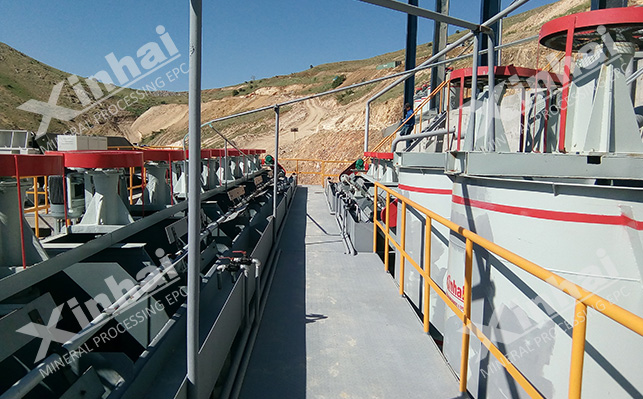Copper, lead and zinc are mostly separated by flotation process. However, the flotation methods suitable for copper, lead and zinc ores of different properties are also different. This article will introduce the four main flotation processes of copper, lead and zinc ores in detail, and deeply explore the technical difficulties of metal separation. I hope that by reading this article, you can find a suitable mineral processing solution.

Process flow: The priority flotation process separates copper concentrate, lead concentrate, zinc concentrate and tailings from the slurry in turn according to the floatability and floating speed of sulfide minerals such as copper, lead and zinc in the ore.
Scope of application: Applicable to ores with simple mineral composition, high ore grade, large floatability difference between useful minerals, and coarse embedded particle size.
Advantages: Strong adaptability, able to cope with changes in ore grade; save flotation reagents.
Process flow: Copper, lead and zinc minerals are floated together to obtain mixed concentrates, and then the mixed concentrates are de-doped and separated to obtain copper, lead and zinc concentrates.
Scope of application: Applicable to polymetallic ores with uneven distribution or dense paragenesis of useful minerals, or fine distribution of one useful mineral in another mineral.
Advantages: Good separation effect, reduced over-crushing of minerals, increased processing capacity and reduced production costs.
Process flow: Select two useful minerals with similar floatability into mixed concentrate, and then separate and flotate them. For example, select copper sulfide and lead ore as mixed concentrate, then separate copper and lead, and finally select zinc concentrate from tailings.
Scope of application: Applicable to copper, lead and zinc polymetallic sulfide ores with similar floatability.
Advantages: Mature process, strong adaptability, combining the advantages of priority flotation and mixed flotation, easy to control process conditions.
Process flow: According to the difference in natural floatability of minerals, the minerals to be recovered are divided into two parts: easy-float and difficult-float. Mixed flotation is performed separately to obtain mixed concentrates, and then copper, lead and zinc concentrates are separated in turn.
Scope of application: Applicable to the situation where one mineral has good floatability, while other minerals can be divided into two parts: easy-float and difficult-float.
Advantages: Reduce reagent consumption, reduce the impact of excess reagents on separation flotation, and improve flotation indicators.
The key to copper-lead-zinc beneficiation lies in the separation of lead-zinc, copper-zinc, and copper-lead ores, especially when dealing with ores with complex intercalation relationships and low grades. Correct selection and use of flotation agents and effective separation of minerals become key steps.
Lead-zinc ore separation: preferential flotation method is used to suppress zinc and collect lead. Commonly used collectors include low-grade xanthate, high-grade xanthate, and black medicine, which are usually separated in alkaline media. Depressants include CN-, NaCN, kCN, ZnSO4, Na2OS3, and Na2S2O3.
Copper-zinc ore separation: preferential flotation method is also used to suppress zinc and collect copper. If the separation is difficult, it is necessary to strengthen the suppression of zinc. The selection of collectors and depressants is similar to that of lead-zinc ore separation.
Copper-lead ore separation: generally, it is the separation of copper-lead mixed concentrates, first de-drug treatment, and then preferential flotation, suppressing lead and floating copper or suppressing copper and floating lead. Suppressing lead and floating copper is suitable for secondary copper ores, while suppressing copper and floating lead is suitable for primary copper ores. Collectors include yellow medicine and black medicine, with a pH value of 9-9.5, adjusted with CaO. Inhibitors include cyanide and its alternative inhibitors, or heating de-doping to inhibit lead at 40-70°C (pH value ≤ 7).
In short, the selection of flotation process for copper-lead-zinc ore needs to comprehensively consider the ore properties, mineral composition and embedding characteristics. By accurately controlling the flotation reagents and operating conditions, the separation efficiency and mineral processing indicators can be effectively improved. I hope that this information provided by Xinhai editor can provide reference and help for your mineral processing process selection.